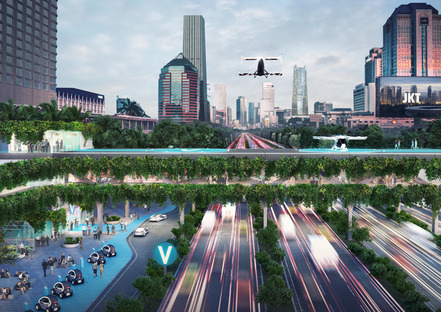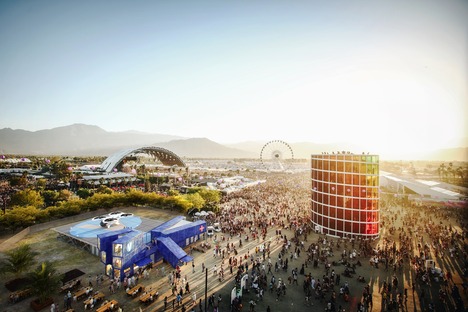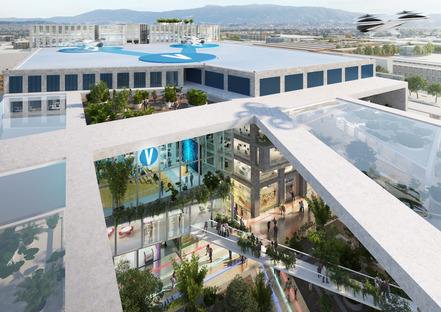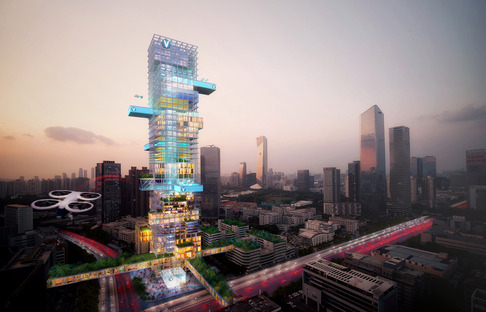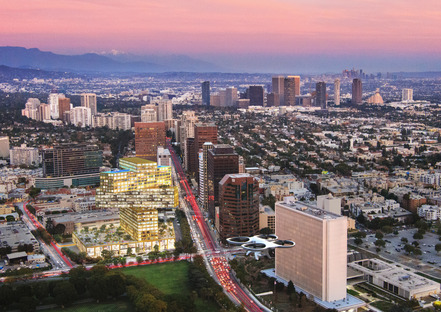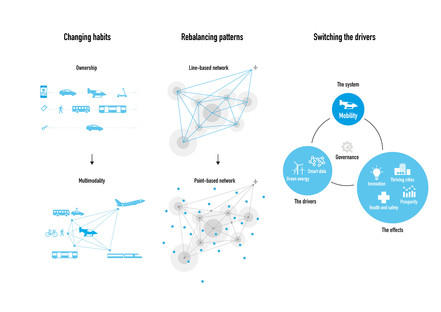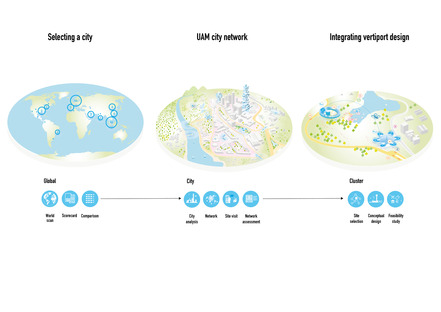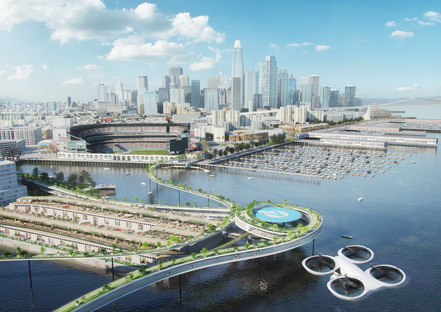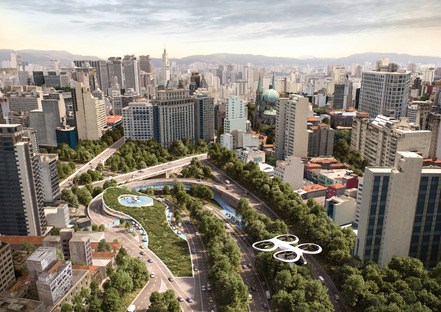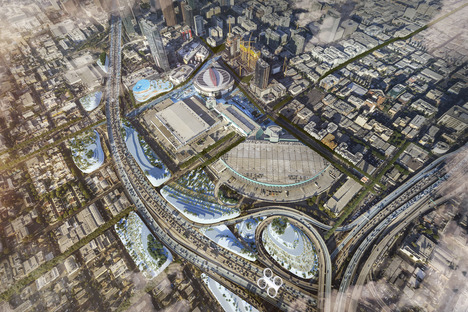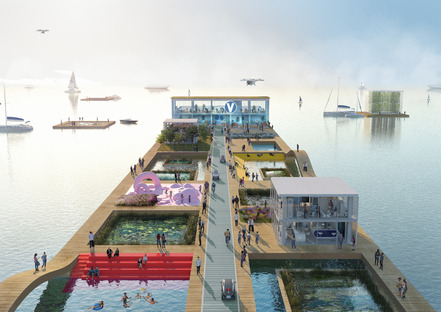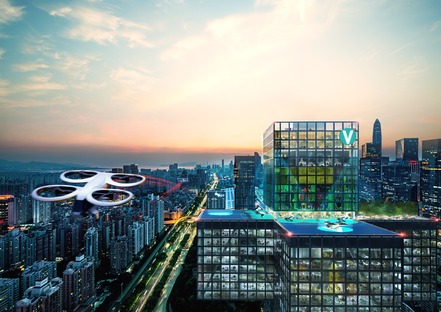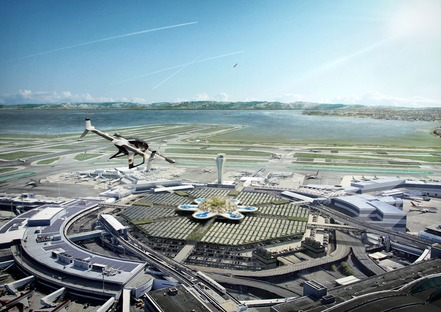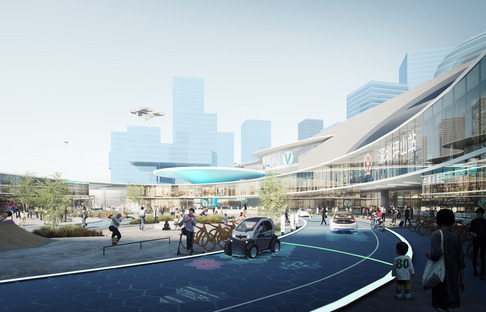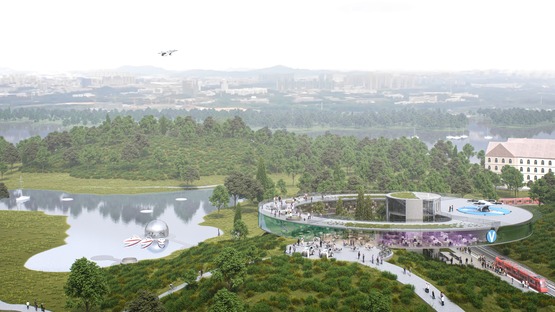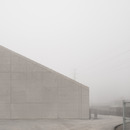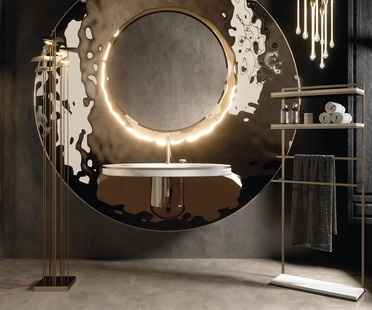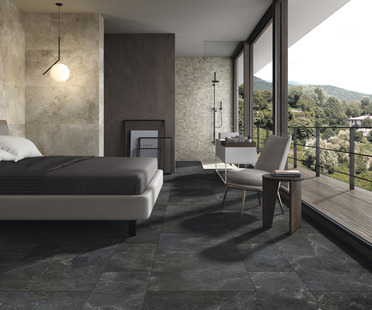07-08-2020
MVRDV’s vertiports for the city of the future
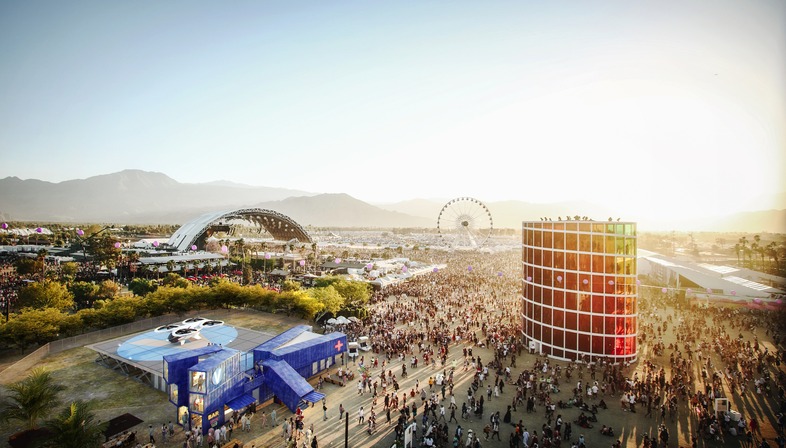 The long dialogue between architects and mobility takes a step forward, imagining the future and giving it concrete form with vertiports designed specifically for the city of the future by MVRDV, thanks to the UAM (Urban Air Mobility) system.
The long dialogue between architects and mobility takes a step forward, imagining the future and giving it concrete form with vertiports designed specifically for the city of the future by MVRDV, thanks to the UAM (Urban Air Mobility) system.Working in collaboration with aerospace companies Airbus, Bauhaus Luftfahrt, ETH Zurich and Systra, the architects of MVRDV have designed hubs for aerial micromobility in response to new developments in drone technology, a growing sector that has gone beyond the military sphere to encompass civil applications. The unusual urban hub is referred to as a “vertiport” because drones take off and land vertically.
The problem with current movements is that despite their relative speed and safety for travel from city to city, they still face the unknown of the so-called “last mile”, which can take more time than the rest of the trip. This uncertainty has led to a new concept of mobility that uses drones for short to medium-length trips, supported by a network of vertiports of various different types, depending on the place where they are installed.
One of the most evocative hubs takes the form of a skyscraper for use in big cities, where balconies become metaphorical garages for apartments, while other, no less interesting hubs are lower in height and blend into their natural surroundings. These facilities also contain other functions, so that people in arrival find what they are looking for right away, whether it be an educational or medical facility or a business incubator. At the same time, however, they can act as bridges connecting neighbourhoods, doing away with the difficulties involved in metropolitan transport.
The entire system offers environmental benefits such as energy self-sufficiency, less demand for new roads that occupy land, and less traffic in cities. Finally, seeing how easy it is to construct, the entire UAM system is capable of speeding up technological leapfrogging for development countries.
Fabrizio Orsini
Architect: MVRDV
Founding Partner in charge: Winy Maas
Director: Enno Zuidema
Design Team
Kris Schaasberg, Irene Luque Martín, Halina Veloso E Zarate, Chun Hoi Hui, Laura Huerga, Rocio, Calzado Lopez, Sophia Armpara, Francesco Barone, Boris Maas, Vedran Skansi, Monika Novkovikj, Paul van Herk, Leo Stuckardt, Chiara Tomassi, Nika Jazaei, Isabella Suppa, Yayun Liu
Visualisations
Antonio Luca Coco, Luca Piattelli, Francesco Vitale, Pavlos Ventouris, Kirill Emelianov, Magda Bykowska, Jaroslaw Jeda, Angelo La Delfa
Strategy & Development: Kris Schaasberg, Greetje Wieringa, Bart Dankers, Daan van Gool
Images: © MVRDV
Copyright: MVRDV 2018 – (Winy Maas, Jacob van Rijs, Nathalie de Vries)
Partners: Urban mobility engineering, Systra
Simulation: Bauhaus Luftfahrt
Energy systems: Tractebel
Business case and development: Upstone










